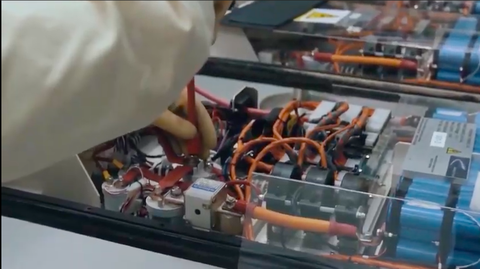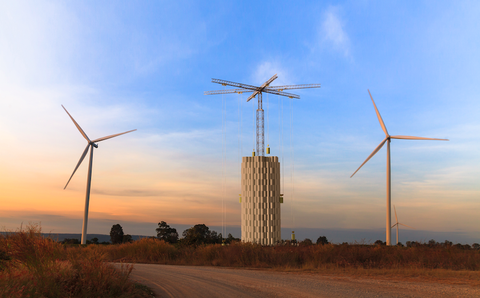The Green New Deal Needs These 5 Cutting-Edge Energy Innovations To Succeed
quarta-feira, fevereiro 13, 2019
The Green New Deal proposed by Rep. Ocasio-Cortez and Sen. Ed Markey is ambitious, which it must be if it's going to combat climate change. But reaching those goals would require some serious innovation.
The blueprint for a Green New Deal, recently proposed by Rep. Ocasio-Cortez and Sen. Ed Markey, certainly has succeeded in focusing national attention on the question of how we will battle climate change in critically important years to come. Whatever plan is adopted (or not), preventing a changing climate from devastating our communities will almost certainly require some technological innovation. Here are five developing strains of science and industry that could help form the foundation of a Green New Deal.
1. Electric Planes
 |
| ZUNUM.AERO |
One of the social media flashpoints in the Green New Deal plan was the suggestion to "build out high-speed rail at a scale where air travel stops becoming necessary." It's a lofty goal, considering that in 2017, according to the FAA, commercial flights in the United States carried a total of 971,595,898 passengers. But air travel, beyond being an unpleasant experience for many, is a major polluter. Air travel accounts for 9 percent of the greenhouse gases produced by U.S transportation.
For regions where rapidly expanding rail travel might be a tall order, electric planes could provide a cleaner alternative. Currently in their earliest stages, companies like Eviation and the Boeing-backed Zunum.Aero want all-electric and hybrid-electric planes that could hit around 650 mile trips. That's enough for Miami to Charlotte, Atlanta to Washington, D.C., or Denver to Kansas City.
There's one big problem in electric planes: batteries. Eviation CEO Omer Bar-Yohay thinks that electric planes could be flying in 15 years, but with massive government investment, who knows what might be possible.
2. Better Batteries
 |
| YOUTUBEINNOVATE UK |
The Green New Deal plan lists Tesla as the type of company that it wants to emulate in looking towards a green future. Tesla's electric cars radically reduce carbon dioxide emissions but their utility is gated by another technology: lithium-ion (Li-ion) batteries.
Demand for lithium has skyrocketed in recent years, to the extent that the British government has warned that "by 2020 the demand for lithium may exceed the available supply as a result of the expansion of the automotive industry."
All this growth is good for reducing greenhouse gases on city roads, but could prove devastating for the regions that hold the lithium, as well as other components of the Li-ion batteries like cobalt and nickel. None of these mining processes are clean—lithium requires a massive amount of water, around 500,000 gallons per tonne. This demand has sparked a water crisis in the Chilean desert. And that's to say nothing of the risk of explosion when it comes to the finished product.
The UK has begun what it calls a Faraday battery challenge, named after legendary British electrochemist Michael Faraday. The challenge is a £246 million (approximately $318 million) investment in improving Li-ion batteries, as well as developing better methods of recycling.
There's no reason the United States couldn't create a Goodenough Challenge doubling the British investment.
3. Gravity-Based Storage
 |
| ENERGY VAULT |
Wind and sunlight, as critics of the renewable technology love to point out, are intermittent. To counter this reality, renewable energy sources lean on batteries. When they're producing in the sunny and windy days, they siphon off some their energy to storage so it can pick up the slack during drier spells.
But it's a real challenge to make this work on a large scale. To quote the Union of Concerned Scientists, "energy storage is expensive." Tesla signed a $50 million deal to create a storage battery in Australia, for example. Not every region that needs better energy storage will have that dough.
Energy Vault, headquartered in Switzerland with operations in California, offers an intriguing idea: a 33-story-high, six-armed crane covered with 5,000 concrete blocks. Software sends these bricks into controlled drops, which can be used to store energy from an outside source or send it back into the grid.
The company claims 90 percent round trip efficiency on energy capture, an eye-popping number which has drawn some skepticism in the industry.
But how better to answer skepticism than trying the system out? Last year the company scored its first client, the Indian power company Tata. A Green New Deal could provide the resources to explore the concept further.
4. Perovskite Solar Panels
 |
| GETTY IMAGESK. Y. CHENG/SOUTH CHINA MORNING POST VIA GETTY IMAGES |
"The potential impact for perovskite solar cells is basically transformational," says Joe Berry, a senior scientist at the National Renewable Energy Lab. The material could provide radically different solar technology than what we have today.
Perovskite is a mineral, first found in the Russian Ural Mountains in 1839. Because of a highly unusual crystal makeup, the mineral has a propensity for properties like superconductivity. Since 2009, scientists have been studying how perovskite could be used to absorb light and challenge silicon semiconductors in solar supremacy.
"The potential for perovskite solar cells is essentially to reduce costs associated with manufacturing and make them essentially ubiquitous technology," Berry says.
"That is to say you can put them everywhere. You can literally paint them on the side of a building and everything then becomes something that can produce electricity and power."
On top of that, "perovskite solar cells currently outperform the efficiency of more established photovoltaic technologies," according to an analysis of the last decade's study of the mineral from Nature Energy.
The idea of painted-on solar panels has kept scientists pushing perovskite for the better part of the decade, but there have been challenges. Current perovskite solar tech struggles when wet, for example. And experts say there's hardly enough research in the field.
5. Carbon Farming
 |
| GETTY IMAGESOLIVER DIETZE/PICTURE ALLIANCE VIA GETTY IMAGES |
Cows have emerged as an early battleground in the Green New Deal debates. Critics leapt on a reference to "farting cows" in a now-deleted draft version of the program which authors defended as a joke, but recent studies show that methane emissions from "enteric fermentation," in the United States could be an underestimated threat. On the whole, the UN estimates that the livestock industry is responsible for 14.5 percent of the world's greenhouse gas emissions.
One potential solution being explored in the United States right now is what's called "carbon farming." A series of updates on traditional land management techniques that started at the Marin Carbon Project in California, carbon farming is loosely defined as "common practices that support plant photosynthesis, increase soil organic matter and reduce erosion." These practices include everything form composting to adding carbon sinks to their farming practices.
Carbon farming hasn't spread across the country, critics say that's because there's not much money in carbon. A Green New Deal could change that.
Page: Popular Mechanics


















0 comentários
Agradecemos seu comentário! Volte sempre :)